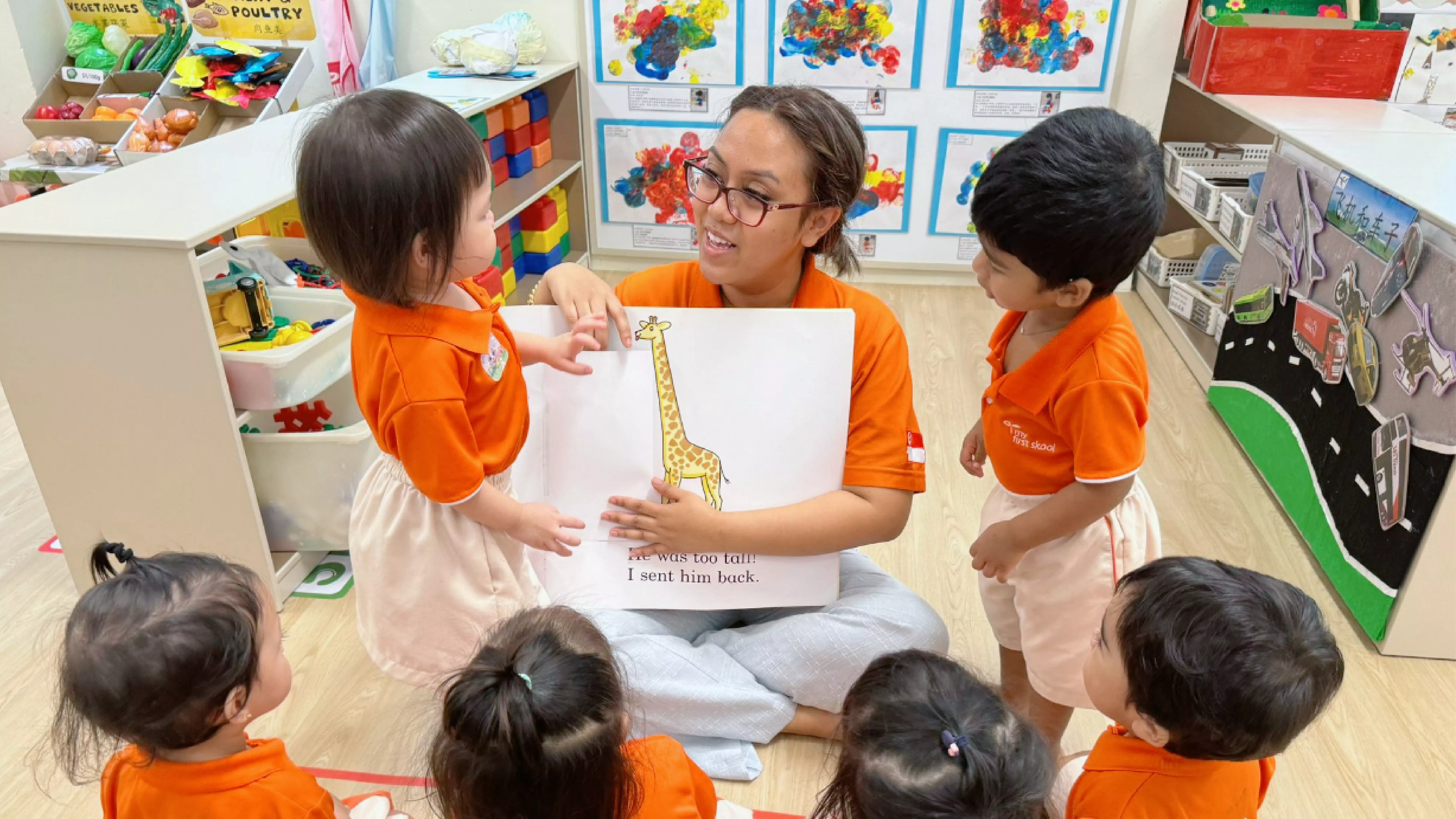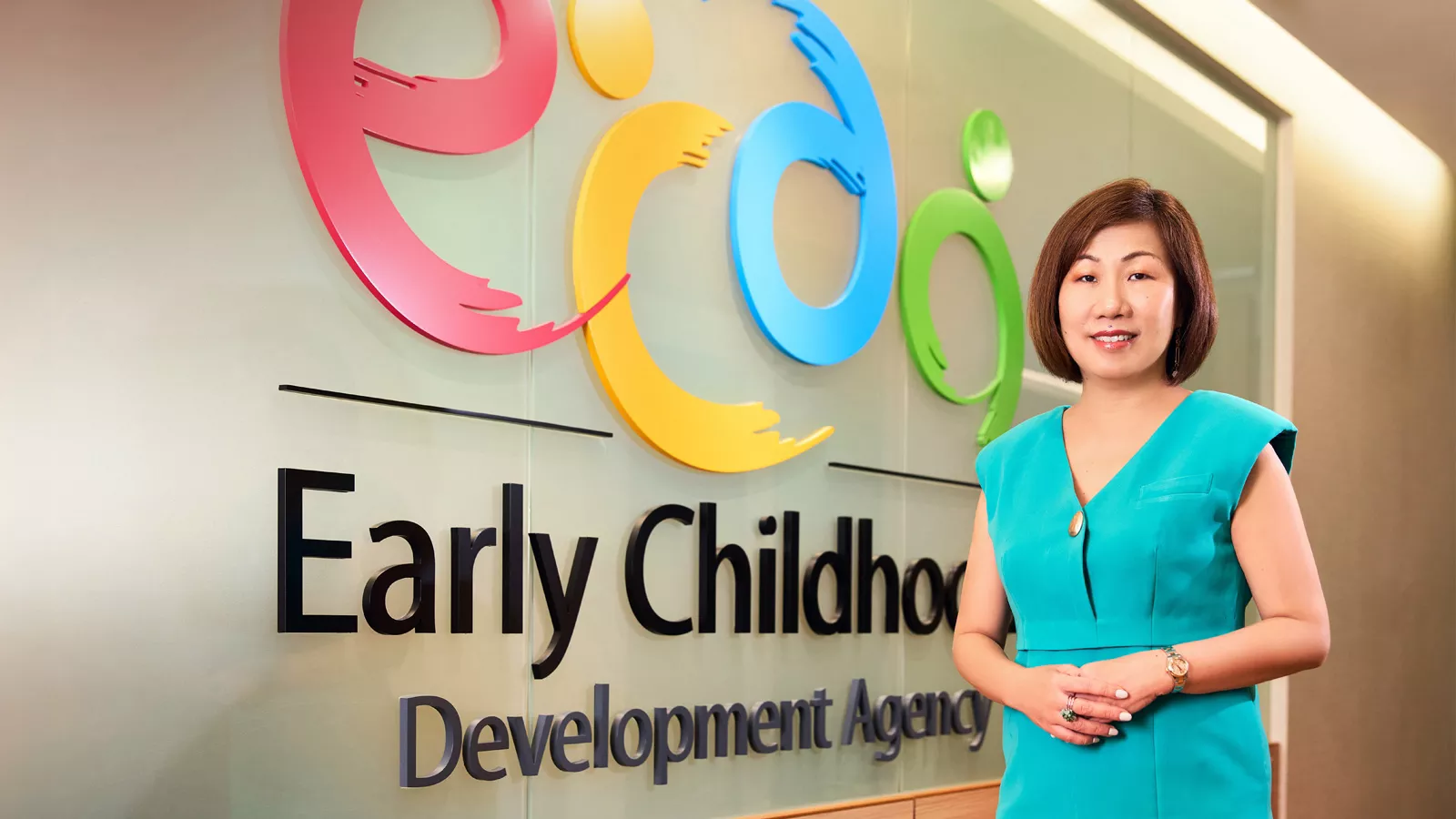ABOUT OUR EXPERT

Ms Toh is an ECDA Fellow and Deputy Head of Preschools at Star Learners Group Ltd. Her expertise spans across curriculum development, school leadership, teacher training and parenting support, with a strong focus on child development, behaviour and emotional well-being.
Studies have raised concerns about the impact of screen time on child development, especially for infants and toddlers. Research indicates that excessive screen use in the early years can lead to insufficient physical activity, poorer language skills and shorter attention spans, as well as affect their social interactions and emotional well-being.
To reduce the potential harm to developing brains, the Ministry of Health (MOH) revised its screen time recommendations for children in January 2025. The stricter guidelines are part of a new national strategy, Grow Well SG, aimed at promoting healthier lifestyles among children and adolescents.
 MOH’s recommended guidance on screen use in young children. The full advisory is available on MOH’s website.
MOH’s recommended guidance on screen use in young children. The full advisory is available on MOH’s website.
These revised guidelines are incorporated into ECDA’s Code of Practice for Early Childhood Development Centres (Fourth Edition). Published in February 2025, it stipulates that preschools must limit screen use to teaching and learning purposes for children aged 18 months to six years.
ECDA Fellow Ms Stacey Toh welcomes this move to enforce appropriate and meaningful screen use in preschools. “Young children learn best through active play, hands-on activities and face-to-face interactions,” she says. “Excessive screen time interferes with these developmental experiences.”
HOW TO GET THE MOST OUT OF SCREEN TIME
During preschool hours, screens should be used intentionally to complement hands-on learning, and not for entertainment or to fill time. Ms Toh explains that positive screen time should be active, not passive, with digital devices aligned to learning goals.
 To ensure positive screen time, provide digital content that aligns with learning goals and watch it together with children.
To ensure positive screen time, provide digital content that aligns with learning goals and watch it together with children.
Educators should ensure that children interact with screen content — alongside their peers and educators — and apply what they learn. Consider digital drawing and storytelling tools that allow children to create and express their ideas rather than solely consuming content.
Ms Toh shares practical ideas on purposefully incorporating screens into the curriculum and teaching practices:
- Go on a virtual field trip
Bring children on virtual field trips to explore the natural world. Use interactive videos to show them different ecosystems (e.g. ocean, rainforest), and observe how animals live in their natural habitats. Follow up with hands-on activities, such as role-playing animals in a class skit. Positive screen time in this context builds curiosity and understanding of the subject matter. It supports language development as children describe and discuss what they see. Comparing different habitats, and learning why animals live in specific environments, encourages critical thinking.
- Create a digital story
Use apps like Book Creator or Magic Valley to co-create stories with children. Children can contribute ideas, while the educator types and narrates their words. Later, the story can be read aloud in class, with children taking turns narrating or role-playing. This builds early literacy skills, such as storytelling, sequencing and vocabulary. It encourages collaboration and self-expression as children brainstorm, work together and see their ideas come to life.
APPLYING ‘SCREEN’ STRATEGIES
“Ensure screens are a complement to hands-on learning, not a replacement,” reminds Ms Toh. She proposes a set of strategies — which form the acronym ‘SCREEN’ — to guide educators in minimising screen time in the classroom and transitioning to active learning activities.
 When using screens in the classroom, follow up with group discussions and open-ended questions to help children reflect on what they have learned.
When using screens in the classroom, follow up with group discussions and open-ended questions to help children reflect on what they have learned.
Using a lesson on the butterfly life cycle, Ms Toh demonstrates how educators can apply the ‘SCREEN’ approach:
- Set expectations. Let children know when and how screens will be used in class. Say: “We will watch a video on the life cycle of a butterfly for five minutes, then we’ll make our own butterflies with playdough.” Use visual prompts (e.g. a timer) to help children with smooth transitions.
- Consistency in applying the rules helps children understand boundaries and learn to regulate their behaviour. Be firm in capping screen time and avoid making any exceptions.
- Role-modelling reinforces healthy screen habits, as children learn by observing people around them. Show your enthusiasm for the playdough session. Emphasise that screens are just one part of the learning process.
- Establish a routine. Keep to a predictable structure for lessons (i.e. screen time, discussion, hands-on activity). This creates stability and, over time, children develop independence and feel empowered.
- Engage children in conversations. Ask open-ended questions before, during and after the video to guide critical thinking and discussions (e.g. “What do you think happens inside the chrysalis?”). Encourage children to reflect by sharing what they have learned.
- Nurture and encourage. Praise children when they show curiosity or try something creative. It builds their confidence when their ideas and explorations are valued.
“By ensuring that screens do not replace meaningful interactions, active play and balanced routines, we can support children’s holistic growth and well-being,” says Ms Toh.







